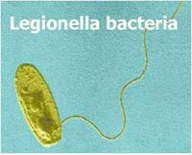What is Legionella?
In late July 2015, an outbreak of Legionnaires’ disease was reported in the Bronx, New York, which has so far resulted in 7 deaths and over 80 individuals infected. In light of these recent events, ChemSystems would like to inform our customers about the Legionella bacteria, what can be done to prevent it, and what ChemSystems can do to help.
What is Legionella Bacteria?
Legionella are rod shaped, Gram Negative, Aerobic bacteria. Theses bacteria are the causative agent for the disease known as Legionellosis.
According to Section 3, Chapter 7 of the OSHA Technical Manual, Legionellosis is considered to be fairly common and serious, and the Legionella organism is considered to be one of the top three causes of sporadic, community acquired pneumonia.
Legionella was first identified in 1976, when 200 people attending an American Legion convention developed pneumonia caused by the organism later named Legionella pneumophila. This outbreak resulted in 34 deaths.
Definitions
Legionella – The name for a particular genus of bacteria. Within this genus, there are more than40 species. Within these species, there are multiple serogroups, each having multiple subtypes.
Legionella pneumophila – A species of Legionella. This particular species is the causative agent for more than 90% of the legionellosis cases. More than 70% of these cases are attributed to a particular serogroup…Legionella pneumophila serogroup 1.
Pneumophila – Lung Loving. When referring to the Legionella bacteria, this indicates that the bacteria can thrive and cause Legionella when inoculated in a person’s lungs.
Legionellosis – The name used to describe the illness caused by exposure to the bacteria pathogen Legionella. This is acquired by inhalation or aspiration into the lungs.

How is Legionella Transmitted?
You can’t catch Legionnaires’ disease from person-to-person contact. Most people get Legionnaires’ disease from inhaling the bacteria that is typically sprayed through a water system.
- Inhalation – of fine sprays, mists or microscopic droplets of water
Most at risk are the elderly and those with suppressed immune or respiratory systems. This includes heavy smokers, alcoholics, HIV patients, organ transplant patients. The most common risk factor found in LD patients is heavy cigarette smoking, along with chronic lung disease.
Sources of Legionella Bacteria
- Cooling Towers or Evaporative Condensers
- Whirpool baths or Spas
- Devices that release aerosols (eg.,ornamental fountains, misters, air washers or humidifiers)
- Showerheads and faucets
Controlling the Growth of Legionella
The primary objective in controlling the growth and amplification of Legionella is to avoid conditions which would allow Legionella bacteria to proliferate. For the water treatment industry, this would mean we should ensure that our customers are aware of:
- The need to keep their cooling towers clean and free of sediment which may harbor bacteria.
- Control of solids in cooling tower water and in basins be achieved through filtration, physical cleaning, or other means such as chemical water treatment
- Customer should have a schedule for required inspection, maintenance, monitoring. OSHA recommends that for cooling towers used year round, cooling towers are cleaned quarterly.
*REMEMBER*: Chemicals are an important part for preventative maintenance of the cooling system, but the Customer must have a program in place for cleaning the cooling tower regularly.
Testing for Legionella
ChemSystems can provide testing for Legionella in your cooling tower system. The testing method used by ChemSystems is PCR.
It is also important to note the following:
- The only practical way to know if you have Legionella is to test for it.
- The detection of Legionella in a cooling system, does not necessarily mean there is a risk of the disease, as not all species of Legionella are associated with the disease.
For more information on pricing, please contact our office at 808-845-4446.


